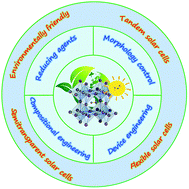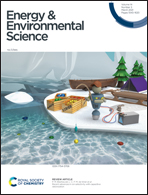Recent progress in tin-based perovskite solar cells
Abstract
As a rising star of third-generation photovoltaic technology, organic–inorganic halide perovskite solar cells (PSCs) have exhibited high power conversion efficiency. However, the most investigated high-performance perovskites contain toxic lead, which may hinder their widespread applications. Among various alternative metal ions to replace lead for environmentally benign perovskites, tin has been successfully used in PSCs with the highest efficiency over 13% at present, making tin-based perovskites the most promising active materials for lead-free PSCs. In this review, we first summarize the device design of PSCs and the physical properties of tin-based perovskites. Then we state the major challenges for this field and discuss the essential techniques in film preparation. Specifically, tin rich conditions (tin halide) and suitable reducing agents are needed in the film preparation to prohibit Sn2+ oxidation, and solvent modulation is a feasible approach for controlling the film morphology. Meanwhile, chemical substitutions of A site and B site cations and X site anions to improve the optoelectronic properties of tin-based perovskites are comprehensively addressed. Moreover, tin–lead mixed perovskites that contain less lead than conventional perovskites for high-performance PSCs and tandem solar cells are discussed. This comprehensive review can shed light on the development of environmentally friendly PSCs and provide a guideline for realizing lead-free PSCs with high efficiency and stability via synergistic approaches.

- This article is part of the themed collection: Energy and Environmental Science Recent Review Articles


 Please wait while we load your content...
Please wait while we load your content...